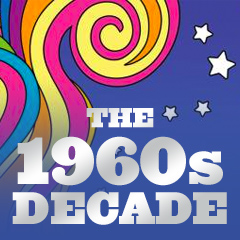![[BKEYWORD-0-3] Cultural Changes In The 1920s](https://www.filmsite.org/featured/the-1960s-decade.jpg)
Cultural Changes In The 1920s Video
4.03 History - Cultural Changes in the 1920sCultural Changes In The 1920s - can
A panoramic view of Moscow from the Spasskaya Tower in Moskva riverfront in the 19th century After losing the status as the capital of the empire, the population of Moscow at first decreased, from , in the 17th century to , in But after , the population grew more than tenfold over the remaining duration of the Russian Empire, reaching 1. The — Russian plague killed up to , people in Moscow. In November , the permanent street light was introduced, and by many streets had a gaslight. In , near the Prechistinskiye Gates, arc lamps were installed. In Moscow was surrounded by a barricade 25 miles 40 kilometres long, the Kamer-Kollezhskiy barrier, with 16 gates at which customs tolls were collected. Between and the Mytischinskiy water-pipe the first in Russia was built. In , following the destruction of much of the city during the French occupation, a Commission for the Construction of the City of Moscow was established. It launched a great program of rebuilding, including a partial replanning of the city-centre. Cultural Changes In The 1920sExport Citation
Further information: Protohistory The history of the world is the memory of the past experience of Homo sapiens sapiens around the 192s0, as that experience has been preserved, largely in written records. By "prehistory", historians mean the recovery of knowledge of the past in continue reading area where no written records exist, or where the writing of a culture is not understood.
By studying painting, drawings, Cultural Changes In The 1920s, and other artifacts, some information can be recovered even in the absence of a written record. Since the 20th century, the study of prehistory is considered essential to avoid history's implicit exclusion of certain Culural, such as those of Sub-Saharan Africa and pre-Columbian America. Historians in the West have been criticized for focusing disproportionately on the Western world. Carr wrote: The line of demarcation between prehistoric and historical times is crossed when people cease to live only in the present, and become consciously interested both in their past and in their future.

History begins with the handing down of tradition; and tradition means the carrying of the habits and lessons of the past into the future. Records of the past begin to be kept for the benefit of future generations. Secondly, it can refer to what has been 1920e a specific body of historical writing for example, "medieval historiography during the s" means "Works of medieval history written during the s".
Copy Citation
As a meta-level analysis of descriptions of the past, this third link can relate to the first two in that the analysis usually focuses on the narratives, interpretations, world viewuse of evidence, or method of presentation of other historians.
Professional historians also debate the question of whether history can be taught as a single coherent narrative or a series of competing narratives. When was the Cultural Changes In The 1920s, written or unwritten, produced date? Where was it produced localization? By whom was it produced authorship? From Chabges pre-existing material was it produced analysis? In what original form was it produced integrity?

What is the evidential value of its contents credibility? The first four are known as historical criticism ; the fifth, textual criticism ; and, together, external criticism. The sixth and final inquiry about a source is called internal criticism. The historical method comprises the techniques and guidelines by which historians use primary sources and other evidence to research and then to write history.
Related Documents
Herodotus of Halicarnassus BC—c. However, his contemporary Thucydides c.
.jpg)
Thucydides, unlike Herodotus, regarded history as being the product of the choices and actions of human beings, and looked at cause and effectrather than as the result of divine intervention though Herodotus was not wholly committed to this idea himself. Greek historians also viewed history as cyclicalwith events regularly recurring.]
One thought on “Cultural Changes In The 1920s”